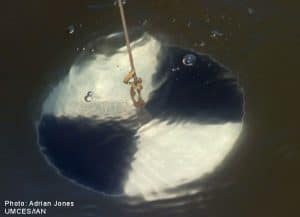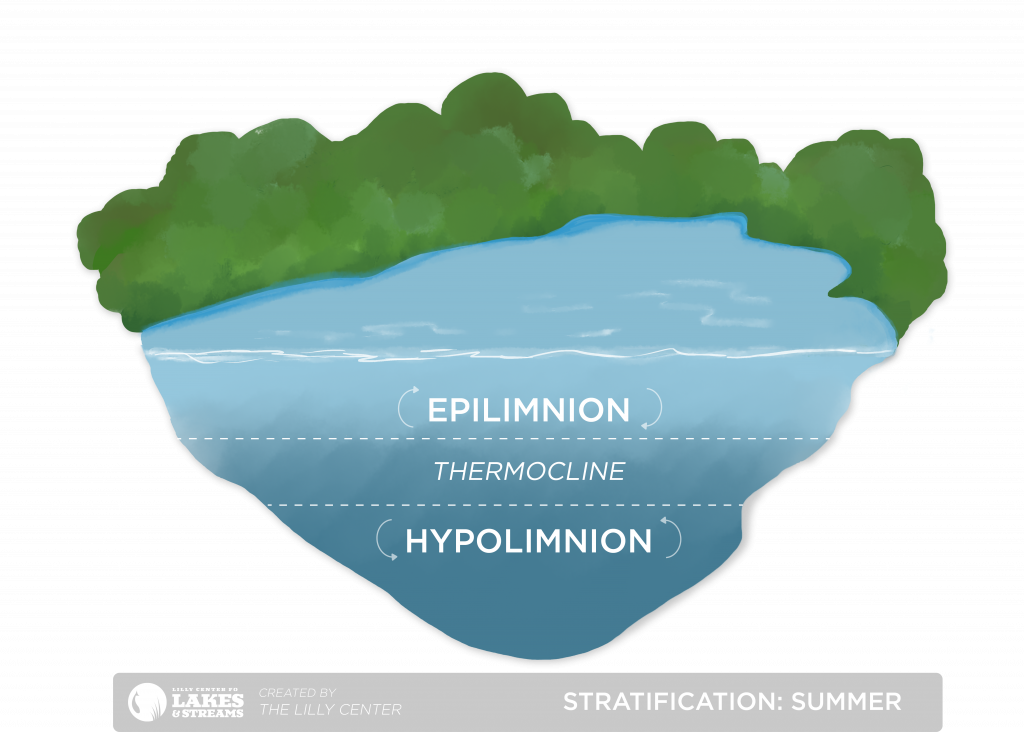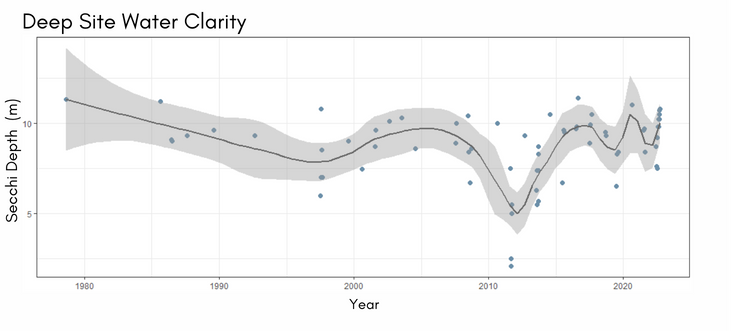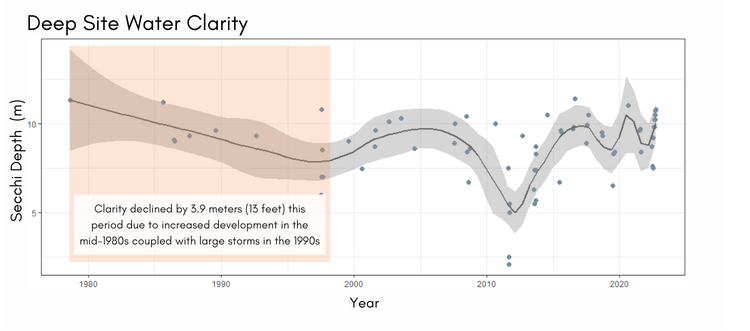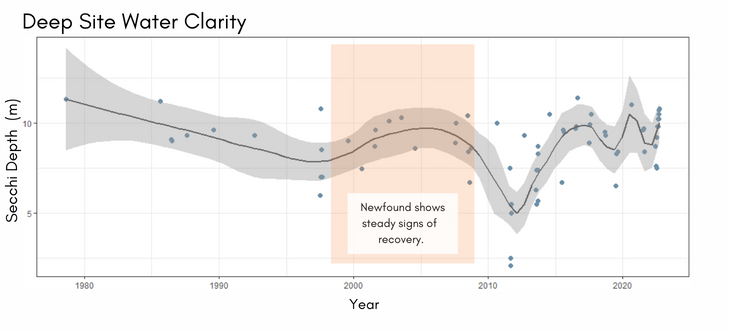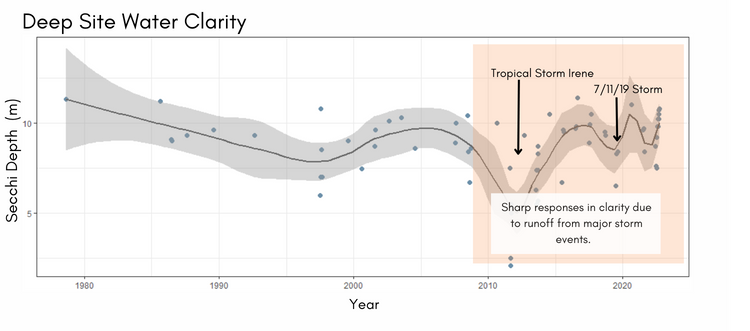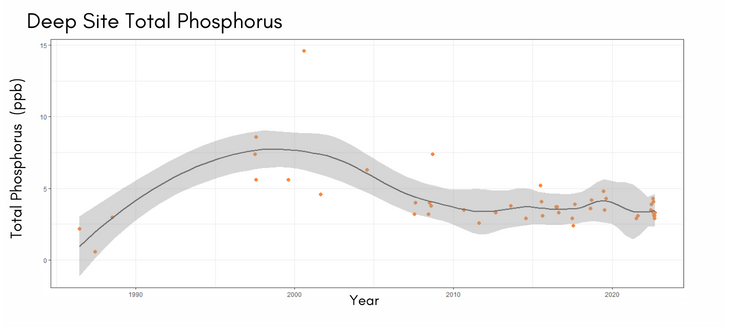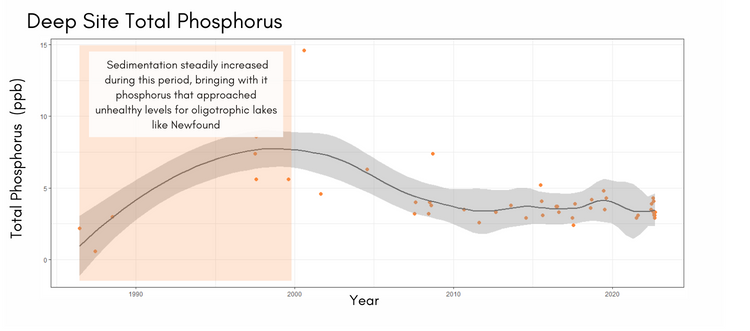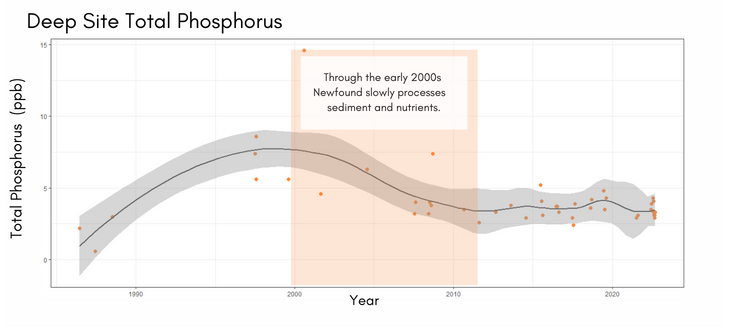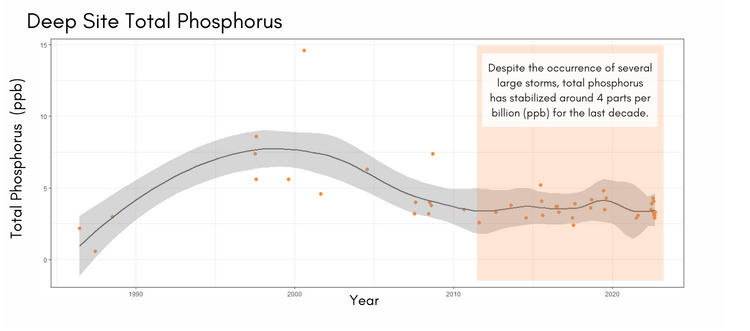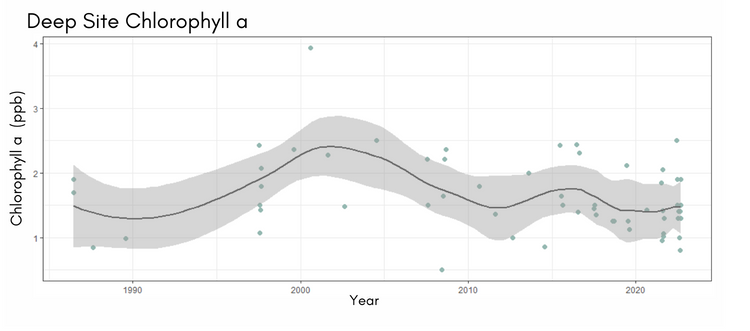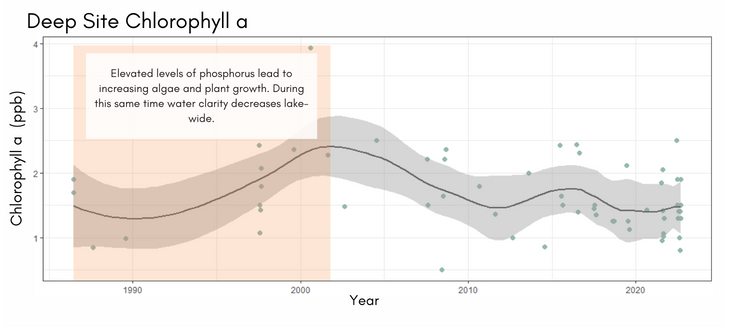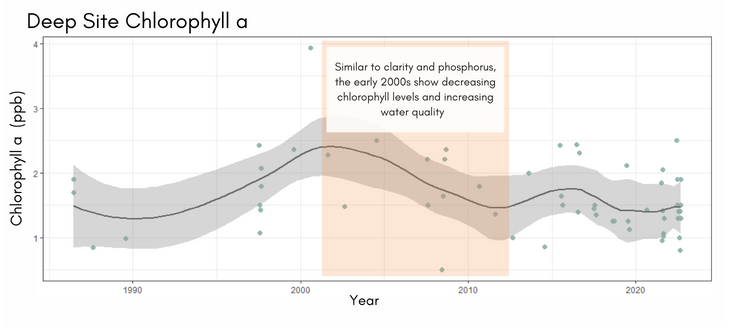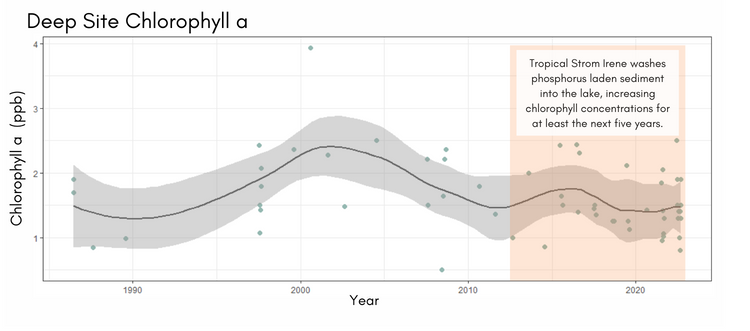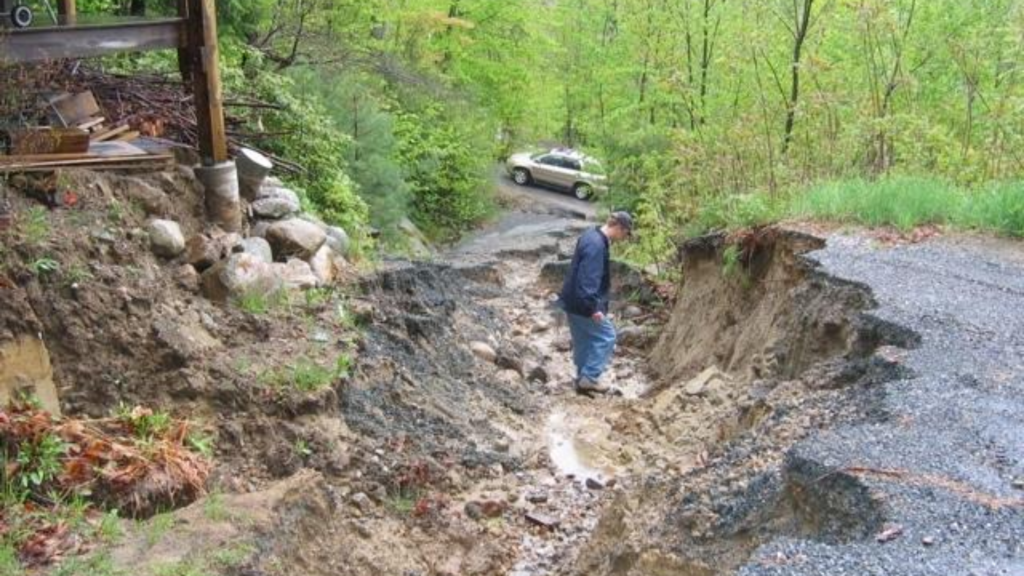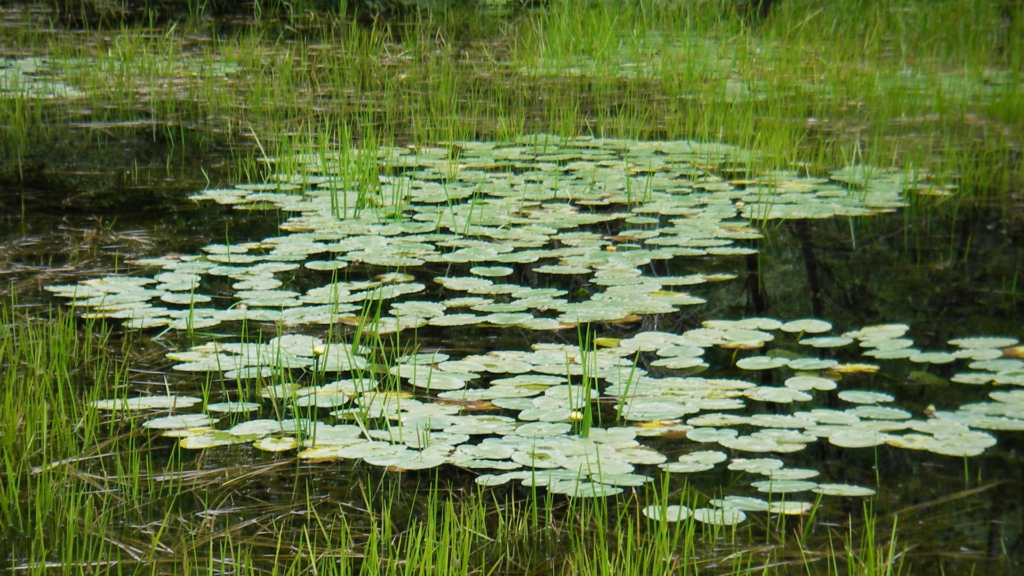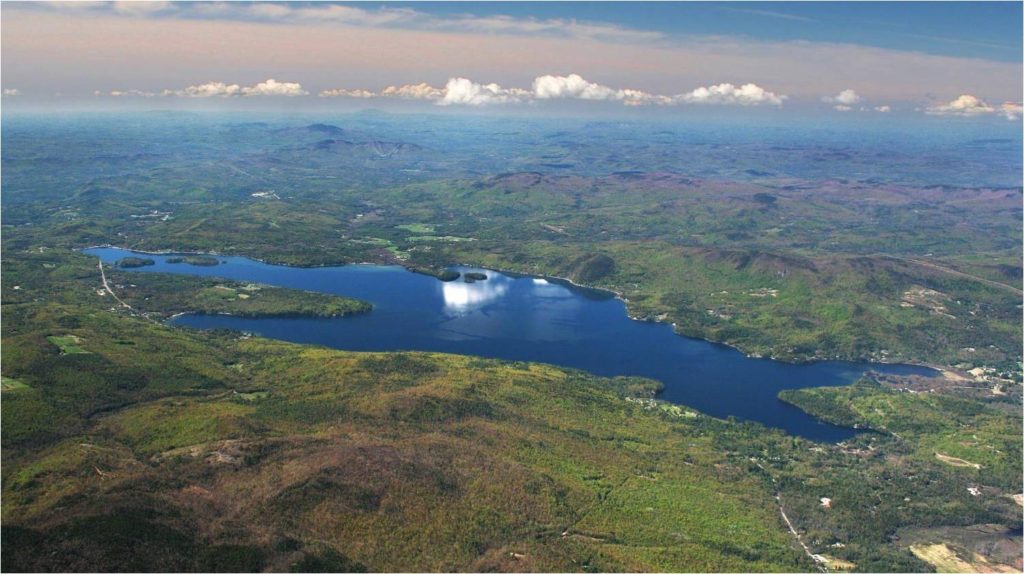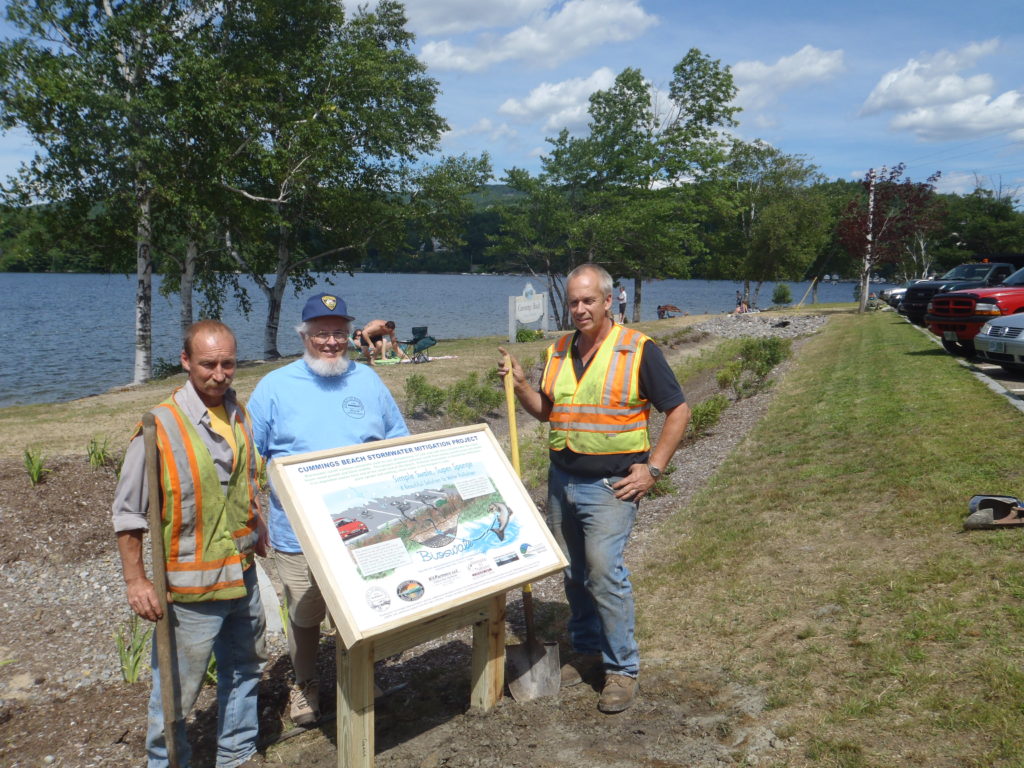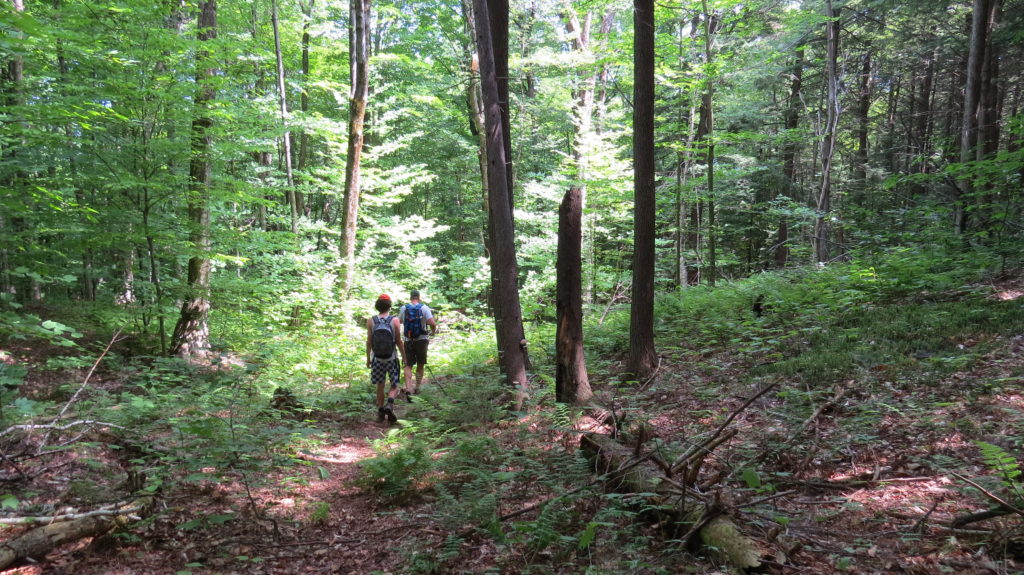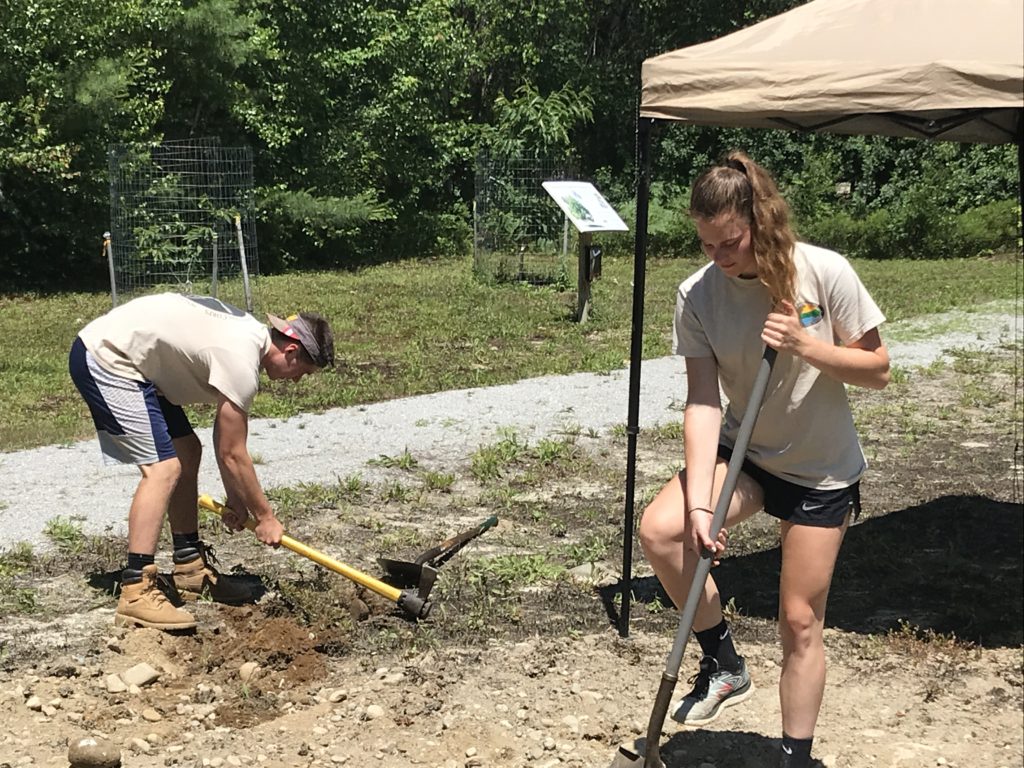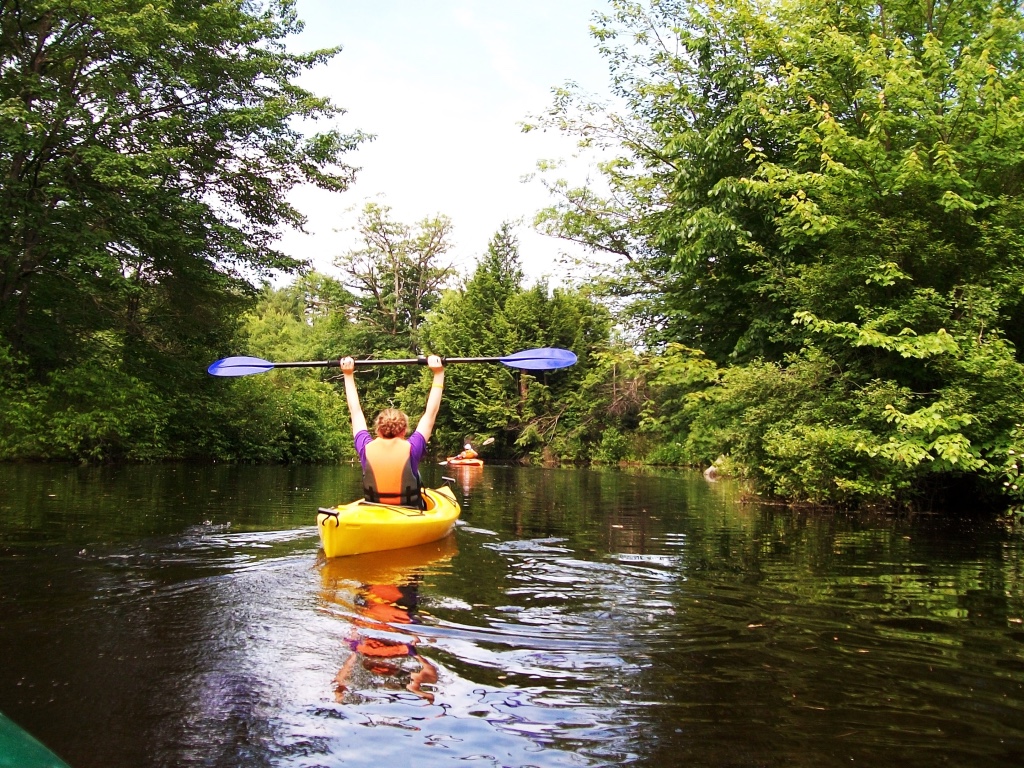2023 LAKE WATER QUALITY SUMMARY
2023 was a year of record-setting weather. Large storms brought upwards of 57 inches of rain to the watershed—washing out roads, flooding homes and sending thousands of tons of sediment into Newfound Lake. Severe storms negatively impact water quality by increasing stormwater pollution which brings sediment, nutrients, and other pollutants to the lake. Newfound’s 38 years of water quality data suggests that the effects of 2023 may linger for some time but don’t necessarily indicate a long-term decline.
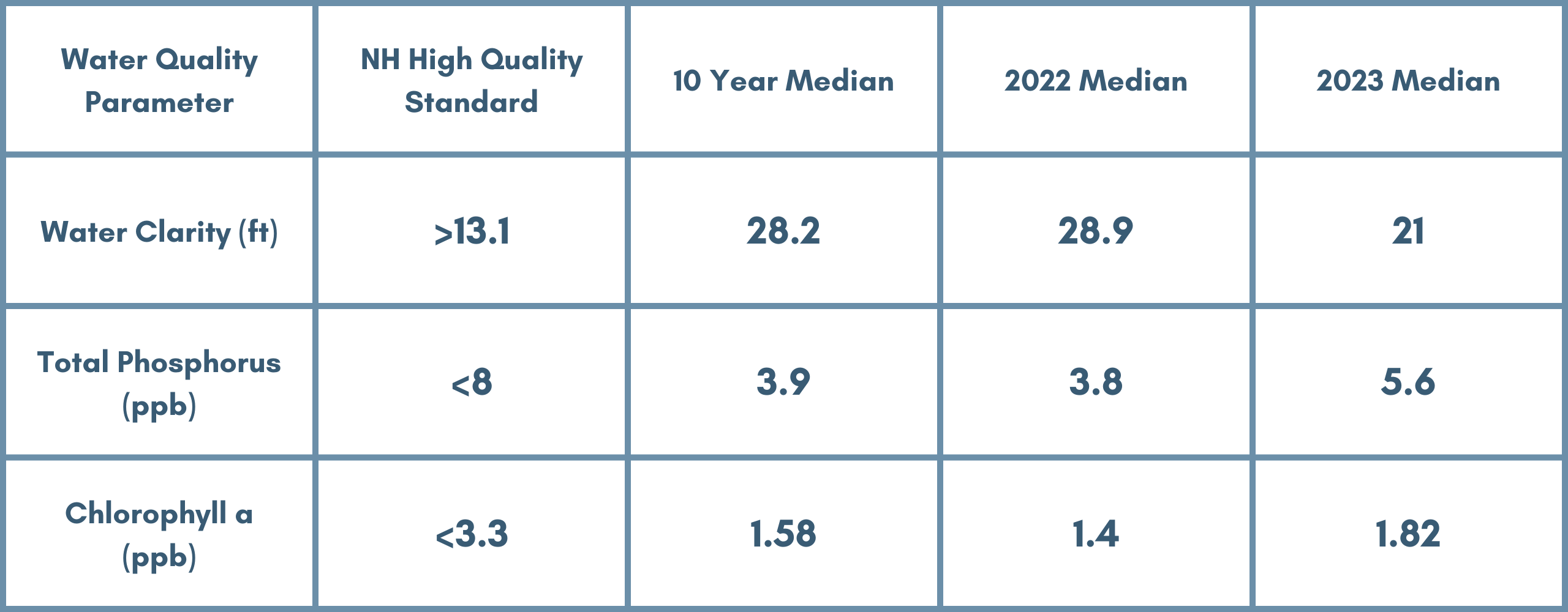
INVASIVE SPECIES
Lake hosts inspected 2,368 boats in 2023, and Weed Watchers surveyed 100% of Newfound’s near-shore area, finding no invasive aquatic plants. Remember to clean, drain, and dry boats and recreational gear to keep invasive aquatic species out of Newfound. Learn more about invasive species prevention.
2024 STATE OF THE LAKE PRESENTATION
Conservation Program Manager Paul Pellissier discusses NLRA’s latest water quality data, the results of expanded invasive aquatics monitoring, new water quality targets, and more in this remote presentation held in February 2024.


